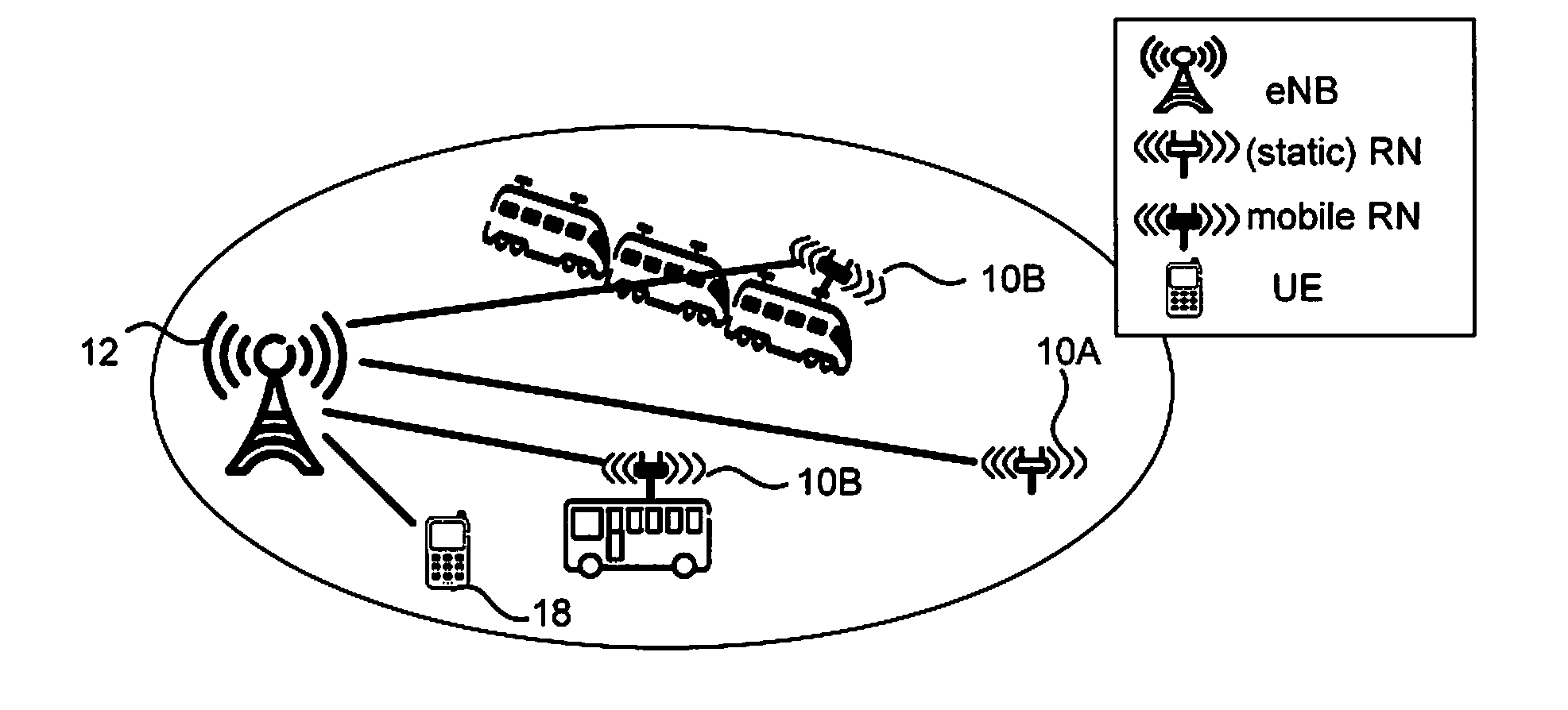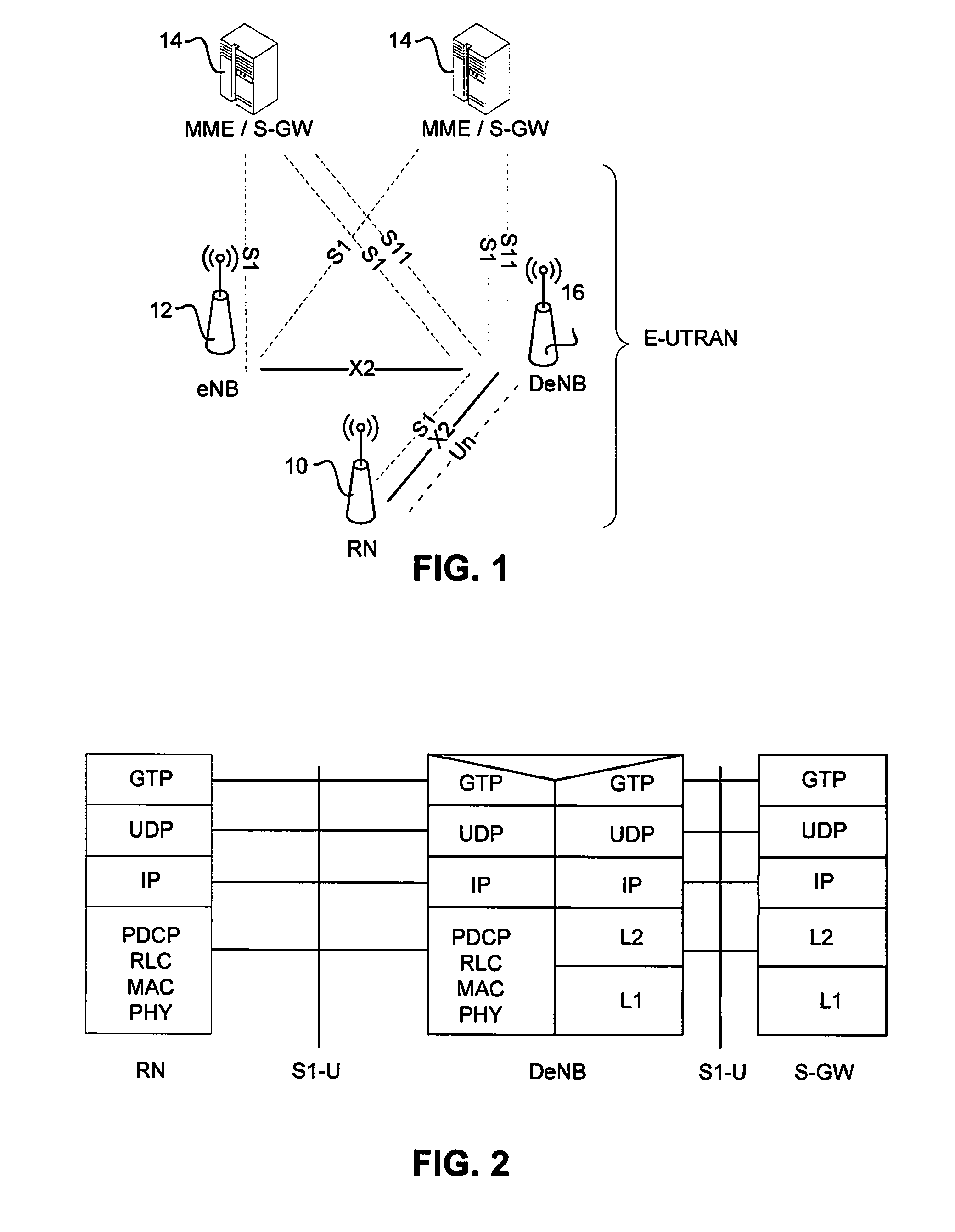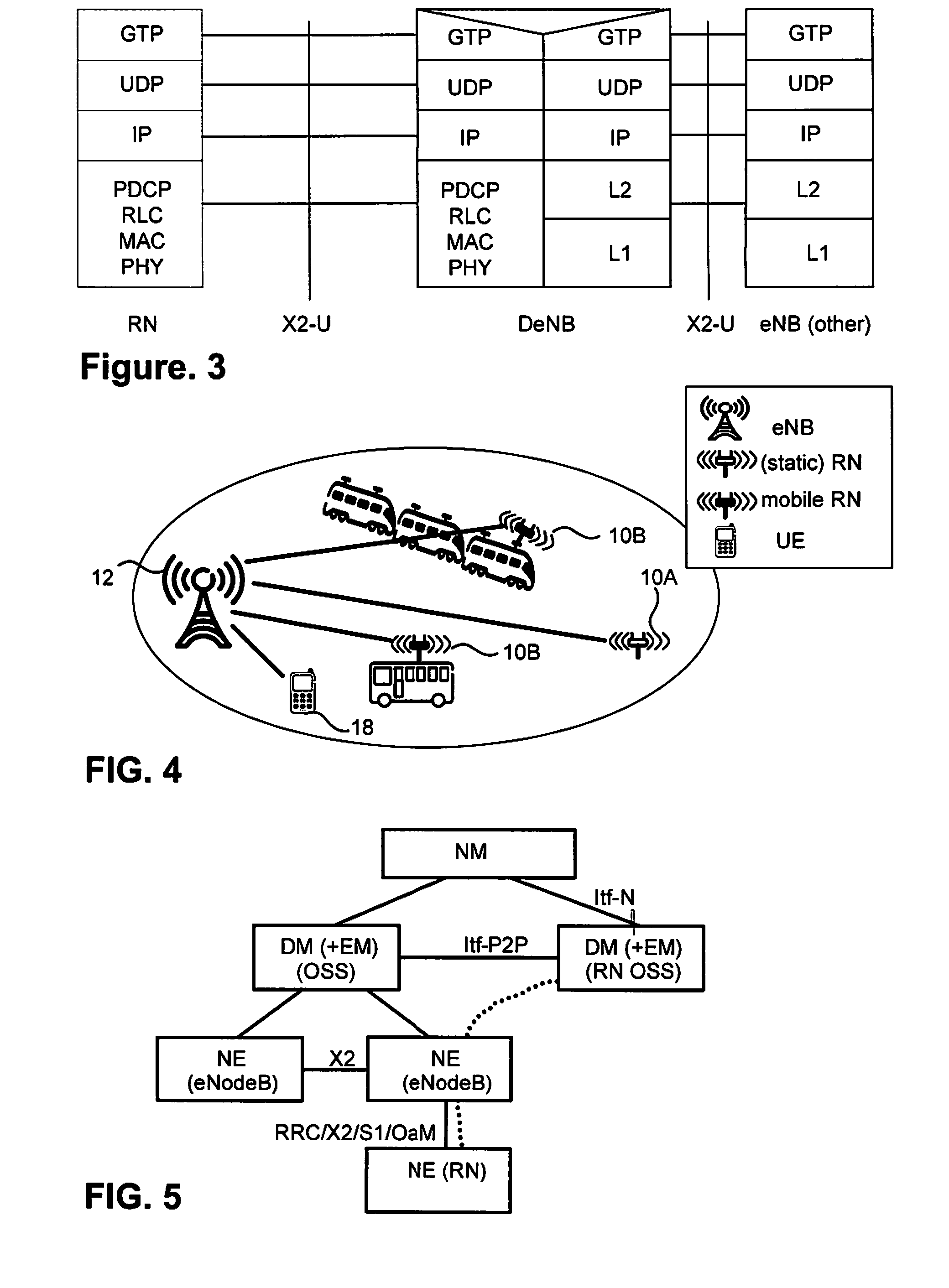Mobility State Aware Mobile Relay Operation
a mobile relay and mobile state technology, applied in the field of radio communication, can solve the problems of significant signaling overhead, long service life, and high throughput, and achieve the effect of reducing the probability of ping-pong handover
- Summary
- Abstract
- Description
- Claims
- Application Information
AI Technical Summary
Benefits of technology
Problems solved by technology
Method used
Image
Examples
example mechanisms
[0076 to identify the different mobility states are now described, followed by non-limiting example embodiments describing desired operation / behavior during each state and how to achieve them.
[0077]In order to align the mobile relay's operation / behavior with its mobility state, the mobile relay's mobility state has to be identified either by the mobile relay itself or another network node. This may be done using one or more of the following example mechanisms: positioning methods, non-positioning methods, and combined methods that use some elements of a positioning method and some elements of a non-positioning method.
[0078]In one non-limiting example embodiment, a mobile relay node is equipped with a suitable positioning system, which is used to determine its mobility state. The positioning method used for the mobility state determination can be satellite-based, e.g. GNSS, or non-satellite based or even a hybrid method, which uses elements of two or more positioning methods for posi...
PUM
 Login to View More
Login to View More Abstract
Description
Claims
Application Information
 Login to View More
Login to View More - R&D
- Intellectual Property
- Life Sciences
- Materials
- Tech Scout
- Unparalleled Data Quality
- Higher Quality Content
- 60% Fewer Hallucinations
Browse by: Latest US Patents, China's latest patents, Technical Efficacy Thesaurus, Application Domain, Technology Topic, Popular Technical Reports.
© 2025 PatSnap. All rights reserved.Legal|Privacy policy|Modern Slavery Act Transparency Statement|Sitemap|About US| Contact US: help@patsnap.com



